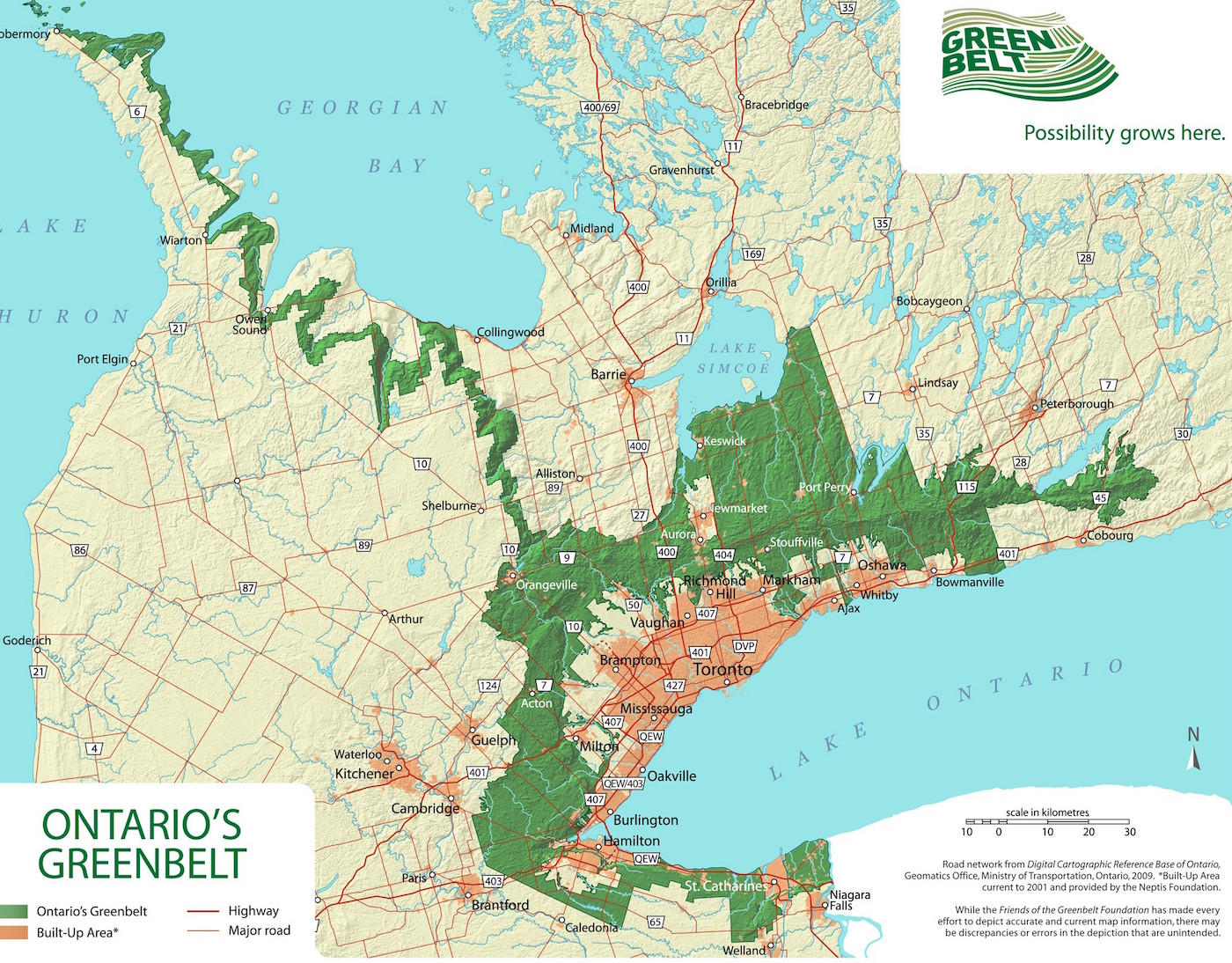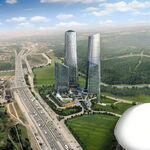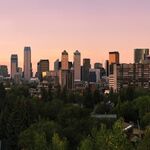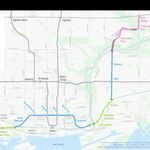Urban sprawl, a symptom of auto-centric land use planning, has long plagued cities around the world. The suburban areas of North American municipalities have especially been characterized by large swaths of single-detached housing and big box stores that make driving a near necessity. Slowly but surely, city builders are recognizing the unsustainable nature of this form of urbanization, citing environmental degradation, increasingly long commuting times, and decreased vitality in older urban areas as reasons why sprawl must be contained.
There are several ways to manage urban growth, including through policies that encourage intensification and transit-oriented development. Perhaps the most noticeable method of controlling growth would be the implementation of a greenbelt. Greenbelt policies aim to preserve the natural and rural character of the countryside. To that end, greenbelts designate land, often undeveloped or agricultural, as protected areas where development is restricted.
 The Golden Horseshoe Greenbelt, image via Friends of the Greenbelt Foundation
The Golden Horseshoe Greenbelt, image via Friends of the Greenbelt Foundation
The greenbelt surrounding the Golden Horseshoe and Toronto, Canada's most populated area, is heralded as one of the largest and most successful of its kind in the world. Established in 2005, the boundaries capture over 1.8 million acres of land. Although the strict policies outlined in Ontario's greenbelt have so far been successful in curbing sprawl and encouraging intensification, criticisms remain about the effectiveness of other, less notable schemes.
As land falling within greenbelt boundaries is often subject to development restrictions, and thus conversion to urban uses proves difficult, property values typically decrease. Since new residential building stock cannot be developed within these areas, the demand for dwelling units routinely outpaces supply, leading to an increase in the overall cost of housing in the region. One of the primary criticisms is the 'leapfrogging' effect that greenbelts may have on the outlying areas. In Ottawa for example, land within the protected area has remained relatively untouched, while regions just beyond, including Kanata and Orleans, have witnessed explosive growth. Residents of these newly developed satellite towns frequently suffer longer commute times and less access to public transit.
 Ottawa's greenbelt and newly created satellite towns, image retrieved from Google Maps
Ottawa's greenbelt and newly created satellite towns, image retrieved from Google Maps
The effectiveness of greenbelt policy is strongly tied to a variety of other factors. The extent of land use controls, the overall size of the protected area, and any complementing legislation working to discourage sprawl can each determine the long-range success of greenbelt projects.
Have any other construction and development terms that you would like to see featured on Explainer? Share your thoughts and questions in the comments section below!

 1.1K
1.1K 













































